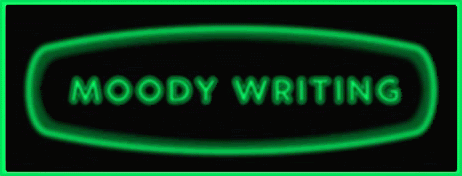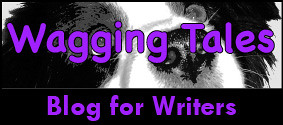According to T.S. Eliot (and he’s no slouch) the only way to convey emotion through words is to use an objective correlative, in other words, a set of objects, a situation, a chain of events which creates a formula for that particular emotion.
That means in order to get across sadness it is not enough to simply state that Jack was feeling sad. We understand what that means, but we don’t feel it. You can say Jack was sad because his mother had died, and we understand why he’s sad, but still it doesn’t really register. But if you write a scene with Jack stood at a graveside with rain falling and mourners sniffling and Jack’s tiny hand gripping a woman’s lace handkerchief etc., then it starts to transfer some of that emotion.
The problem is that although it is true that emotions are triggered within us by symbols we all recognise and react to, because those symbols get used a lot (like rain at a funeral) it becomes obvious what the writer is doing. That doesn’t necessarily invalidate the power of those symbols—anyone who’s teared up when watching an advertisement on TV knows it doesn’t matter how corny you make it, schmaltz sells—what it does mean though is that if you want to garner respect for your writing all the seats at the front have already been taken.
Of course, Mr Eliot had the advantage of writing at a time when the world was a simpler place. The idea that each emotion can be triggered by an external object, and that emotional reaction will be the same in every reader is easier to accept when your books are only read by half a dozen people who all went to the same school as you. And in fact one of the examples Mr E gave of a work that had failed to correctly apply the principle of objective correlativism was Hamlet, so it’s not exactly an uncontentious concept.
However, like most tools it is only as useful as it’s wielder’s abilities allow it to be. The point is, emotion is easier to create when you show the cause of the emotion, rather than just the effect of it. But it isn’t just a matter of show rather than tell. If for example a person is afraid of something that hasn’t happened yet, how can you show that? Or if the cause is a secret to be revealed later in the story? Or what if the emotion is suppressed and doesn’t directly correlate to the event (for example, if my fear of my father has warped into a murderous rage whenever I see a department store Santa), how does one convey that?
And then there are some states of mind that don’t work very well when using this method (confusion, boredom, insanity), they just end up reading as tedious.
The trouble with simplifying an idea into its core concept is that people end up thinking that’s all it’s good for. But like any tool, the basics are just the basics. Nobody can show you how to carve a beautiful statue out of a block of stone using a chisel, they can only show you how to chip a bit off and the rest is up to you.
Knowing that there is a way to trigger emotion in the reader using a symbol created by grouping words together is the starting place. You need to know what emotion you want to create, you need to know what is causing that emotion for the character, and then you need an objective correlative.
Got your objective correlatives all sorted out?
-----------------------------------------------------------
If you found this post useful please give it a retweet. Cheers.







































































































18 comments:
Well, I don't Tweet, but it was very helpful!
How to show something that hasn't happened yet... that's going to keep me up all night!
@Nancy-thanks, glad to be of some help.
@Alex-well, I could tell you how, but where would be the fun in that?
Okay, I'm going to have to mull this one over for a bit. Thanks for tickling the gray matter.
Great post. Your point about how some states of mind can be tedious was something I never focused on before.
Thanks for laying this out in such detail. Something to think about.
This is probably the single toughest element of writing for me. Like you said, all the good seats have been taken. Coming up with something fresh yet meaningful, that is the task. Also, I attended a workshop at a recent conference, and the subject was symbolism and how the same symbol can have such different meanings/emotional attachments to various groups. So finding one that is universal and conveys the correct meaning...ugh, makes me want to take up knitting some days. But when you find one that works, it's magic. :)
I always, always struggle with this. So it's helpful to get a reminder of how to fix it (sort of).
@LD-nothing better than a tickle followed by a mull.
@MC-it's a fairly common approach to think putting the reader in the sama state of mind as the character is automatically a good thing. Not always the case.
@Julie-my pleasure.
@LG-I think the only thing you can do is work on what has resonance for you and let others react as they will.
@Jake-it tends to depend on specific context, generic examples tend not to be all that useful. The more specific the better. In fact the more usuusual, unique the correlative, the more people will respond to it.
Without sounding like a sociopath (I hope), I've been observing the effects of sadness on my mother, beyond crying, to potentially use in writing. Okay, that still makes me sound sociopathic. It's for a good cause?
Ah, the pressure! But of course that is half the fun right?
Thanks for the tips and challenge.
See Mood, I read your blog for this kind of advice. It's very well explained although I would've take a more hands-on approach. That would be cool if you'd do workshop posts and put some of that advice in practice, one concept at the time. I'm sure it would make the bloggie space boom.
So basically, you are saying once again to show and not tell and this time you are showing us one way you can accomplish this. I think subliminally, I was already doing this. But it makes me want to reread my manuscript and see where I use mood in a scene to transfer emotion to a reader.
@Sophia-you scary.
@halli-I like the pressure, it makes working it out much more rewarding. I never trust wehn things are too easy.
@Ben-I would actually like to get some people together at some point and see if we can fast track the development process. Would be cool.
@Michael-I think showing is a key part of connecting to the reader emotionally, but it isn't the only way. What's more important (I think) is to be aware of what it is you want the reader to feel and why. Many writers shy away from being that controlling, but only when you know exactly what you're going for can you see how close you are.
Informative article, well written. I tweeted your link along with this line: emotion is easier to create when you show the cause of the emotion, rather than just the effect of it
This post was a little difficult for me to parse, not because it wasn't well-written, but because I am struggling a bit with the concept.
Can you give an example from something you've read that you consider a successful unusual, unique correlative that you feel elicited the proper response?
@Wednesday-In One flew Over the Cuckoo's Nest, Billy has a stammer. When McMurphy shows them all how to stop worrying and enjoy life, bringing girls into the asylum and getting Billy laid, he stops stammering. He's happy and feels good about himself. When Big Nurse catches them all she tells Billy she'll have to inform his mother. He begs her not to but she has to follow protocol. Billy's stammer returns.
The stammer, which in itself is not terribly awful or debilitating, is devestating in its implication of what she's done to him. It represents something you can feel in yourself, a sense of loss.
Hope that helps.
Actually, it does. Beautifully, thank you.